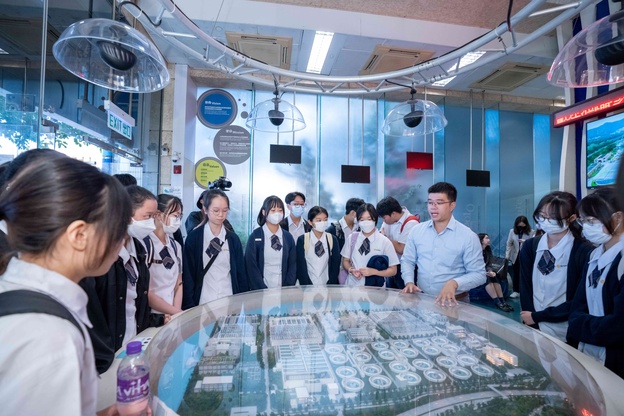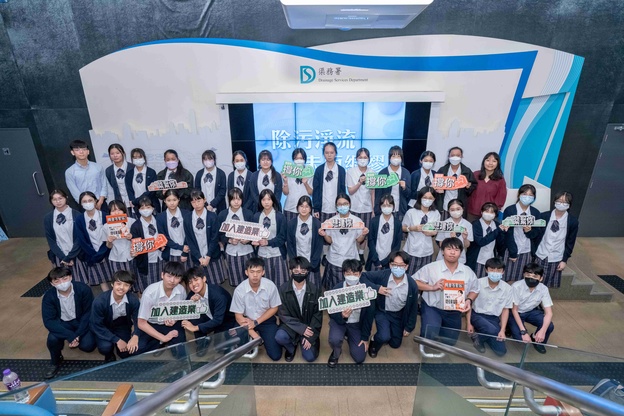Master Talk: DSD Sha Tin Sewage Treatment Works
Apart from contributing to the development of the city’s infrastructure and housing, the construction industry is also paramount to ensuring a healthy living environment for the public and the sustainable development of the city overall. This time, the "Master Talk" series brought biology students of the Buddhist Mau Fung Memorial College on a tour of the Drainage Services Department’s Sha Tin Sewage Treatment Works. Thanks to a thorough introduction by the electric and mechanical engineers, students gained a basic understanding of the wastewater treatment process and its importance to environmental protection, the reclaimed water program, and the career development of engineers in related fields. Students also had the opportunity to step into the Primary Sedimentation Tank and Aeration Tank, getting a first-hand experience on the challenges behind wastewater management.
Connecting Sewage and Our Daily Lives
The journey began at the Sha Tin Sewage Treatment Information Centre, where mechanical engineers and tour guides unraveled the unseen journey of wastewater — from domestic use to oceanic release. The biology-major students discovered that everyday activities, such as showering, cleaning, and toilet flushing, contribute to a staggering daily per capita wastewater production, equivalent to 1,000 small, 236mL milk cartons. They learned about the extensive subterranean and subaqueous network that processes this water over 10 hours before safely reintegrating it with the ocean.
Beyond the mechanics of wastewater management, the engineers imparted valuable insights into career trajectories within the sector, highlighting their roles as an E&M engineer in public construction, as well as the professional qualifications required.
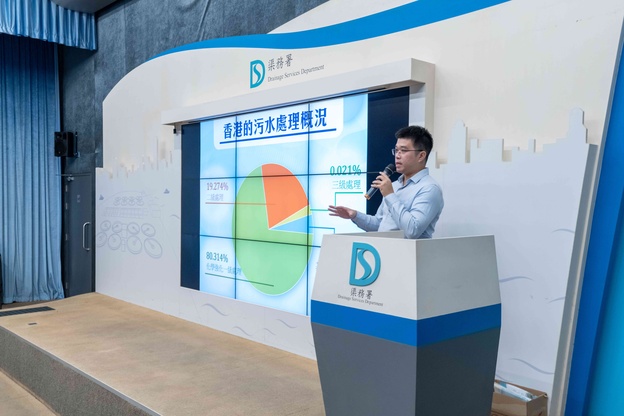
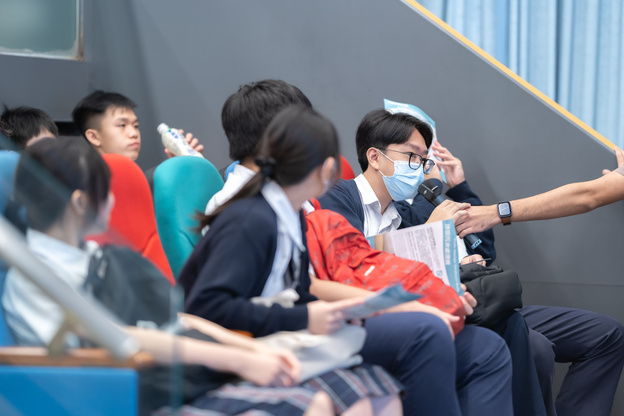
Immersive Experience in the Stringent Wastewater Treatment Process
Upon developing a foundational understanding of wastewater treatment, the tour's next phase brought the students to the front lines — the Primary Sedimentation Tank and Aeration Tank — where they witnessed the sheer scale and complexity of wastewater treatment. The students observed how the wastewater is directed to the primary sedimentation tank after undergoing preliminary treatment, whereby half of the suspended solids are settled out and removed as primary sludge by sludge scraping mechanisms. Confronted with the tank akin to a large swimming pool – odours thick in the air – some students questioned the size of the tank (the answer was 5 metres); others joked they want to have a dip it in with their classmates.
Secondary (biological) treatment takes places in the Aeration Tank. Compressed air is fed continuously to provide oxygen essential to sustain the growth of micro-organisms, which will assimilate organic pollutants in the sewage. Treated sewage will undergo a final sedimentation before it’s discharged to Victoria Harbour through water tunnels and surface drainage channels.
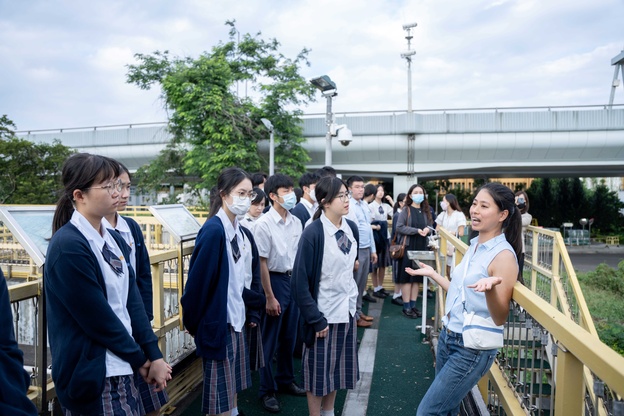
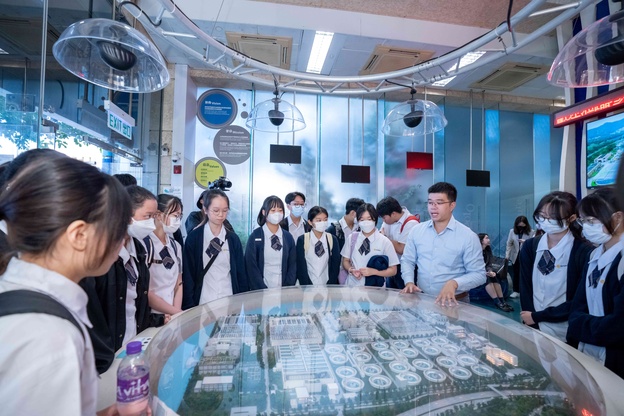
Conversion of Wastewater into Reclaimed Water
The tour's crescendo was the visit to the Sha Tin Water Reclamation Information Centre, where students were introduced to the innovative a pilot scheme on production and application of reclaimed water, launched by the Drainage Services Department (DSD). Here, the students learned about the meticulous process of secondary treatment and ultraviolet disinfection, followed by reverse osmosis, rendering the water suitable for various non-potable uses such as plant cleaning, irrigation, toilet flushing and chemical dilution. As the excursion concluded, the students emerged with a newfound appreciation for the complexities of wastewater treatment and a keen interest in the engineering careers. We hope to see these students again in the construction industry!
